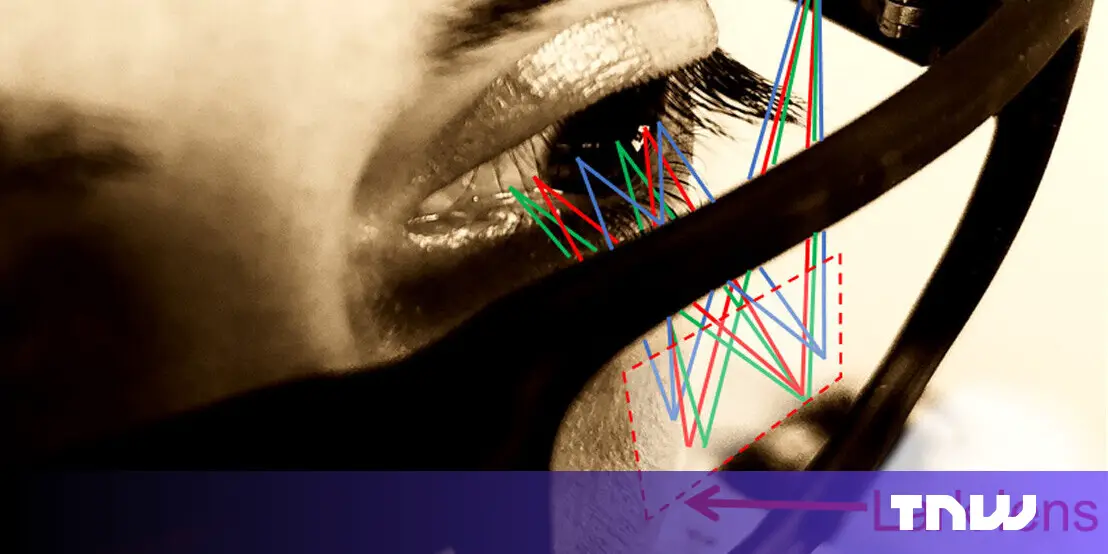This story is syndicated from the premium edition of PreSeed Now, a newsletter that digs into the product, market, and founder story of UK-founded startups so you can understand how they fit into what’s happening in the wider world and startup ecosystem.
Whether you believe it’s the future of everything, or just a useful tool that will be part of the mix of tech we regularly use a few years from now, augmented reality is a rapidly developing field with one major drawback – like VR, it can leave you feeling sick.
For example, US soldiers who tried Microsoft’s HoloLens goggles last year suffered “‘mission-affecting physical impairments’ including headaches, eyestrain and nausea,” Bloomberg reported.
While the technology could “bring net economic benefits of $1.5 trillion by 2030” according to PwC, this sickness is a massive inhibitor to the growth of AR and VR.
One startup looking to tackle the problem is Cambridge-based Lark Optics, which has developed a way of bypassing the issues that cause these problems.
“In the real world, we perceive depth by our eyes rotating and focusing. Two different cues need to work in harmony. However, in all existing AR glasses, these cues fundamentally mismatch,” explains Lark Optics CEO Pawan Shrestha.
Having to focus on a ‘virtual screen’ on augmented reality glasses, means users have to switch focus between the real world and the augmented one. This depth mismatch causes physical discomfort and conditions like nausea, dizziness, eyestrain, and headaches.
What Lark Optics does differently, Shrestha says, is it projects the augmented reality image onto the user’s retina. This means the AR is always in focus no matter what your eyes do to adjust to the real world around you.
So far the startup has developed a proof of concept and is now iterating to refine its demonstrator model. Shrestha says they conducted two successful user studies with their proof of concept; one in their own lab and another with an external partner he prefers not to name.
When the tech is ready, they want to use a fabless model for producing the components they design, which they will then sell to original equipment manufacturers who make AR headsets.
Given they’re addressing such a fundamental challenge to the mass adoption of AR, it’s unsurprising that other companies are tackling it in other ways (more on that below). But Shrestha says his startup’s approach is the most efficient in terms of processing power and battery power, and doesn’t affect the user’s field of vision.
Shrestha grew up in rural Nepal (“really rural… I was nearly nine years old before I saw electric lights”). He says his parents’ enthusiasm for his education eventually led him to New Zealand where he obtained a masters degree in Electronics Engineering from the University of Waikato.
Keen to develop technology he could commercialise, he says he developed an interferometer. While that venture didn’t work out, his work led him on to a PhD from the University of Cambridge, where he spotted the commercial potential of a new approach to AR displays.
“It was scientifically challenging, but it was also something that could touch the lives of many, many people,” he says.
Shrestha co-founded Lark Optics (which was previously known as AR-X Photonics) with his friend Xin Chang, and Daping Chu who previously oversaw the PhD work of Shrestha and Chang. The trio have been working together for around a decade but only got started with Lark Optics in earnest last year,
Shrestha says this week they have been joined by a new recruit, Andreas Georgiou, who previously worked at Microsoft as a principal researcher in the field of optical engineering.
Perhaps unsurprisingly, Shrestha says being based in Cambridge is a big benefit to them, with a community of experienced advisers around them, and access to relevant investors. He is particularly inspired by the progress made by Micro LED tech startup Porotech, which has raised a total of $26.1 million to date.
And Shrestha has warm words for the Royal Academy of Engineering’s Enterprise Fellowship, of which he is a part. This provides up to £75,000 in equity-free funding to cover salary and business costs, along with mentoring, training and coaching. This was what allowed him to get started on developing Lark Optics as a business.
Lark Optics itself raised a pre-seed round of £210,000 in October last year, Shrestha says, and will be raising a seed round in Q2 this year.
As mentioned above, others are tackling the problem of AR sickness in different ways. LetinAR uses a ‘pin mirror’ method, Kura Technologies has developed a ‘structured geometric waveguide eyepiece’, while VividQ “compute[s] holograms in real-time on low power devices and integrate[s] them with off-the-shelf display hardware.”
Another company, SeeReal develops holography-based solutions to address depth issues in 3D displays.
But Shrestha says these rival technologies either require a very high level of data throughput, with a related computational and battery power overhead, or require very high resolution displays. And while some techniques decouple the AR display from the real world like Lark Optics does, Shrestha says they are “like looking through a chicken fence.
“We solved the problem without getting a significant penalty on processing power or battery power, or artefacts. So that’s why I think our approach is the best.”
Lark Optics’ ambition is to become established as the best optics for AR, VR, and mixed reality glasses.
“We want to realise the full potential of AR and VR. Now we have AR and VR you can wear for 20 minutes or 30 minutes. We want to make it feel as natural to look at real objects, VR ,or AR, and allow people to use it for all-day, everyday use.”
Shrestha sees the biggest challenge to achieving this is being able to recruit the right people in what is quite a specialised field. But he’s optimistic that attracting just one or two high-level people will end up attracting more, and the endorsement of a good seed round raise in the coming months won’t hurt either.
AR, VR, and MR has been massively hyped in recent years but there have been questions over how much of a future it has. Investor disquiet over Meta’s huge spending in the ‘metaverse’ space, and Microsoft’s job cuts in its HoloLens division as it struggles to turn it into a viable business, show that there’s no straight line from here to a future where this tech is widely used.
But that said, the current jitters of the public markets over stock prices and tech company spending isn’t an end for AR, VR, and MR at all. Apple’s first headset is on the horizon, which will no doubt spin up another wave of interest in the space (although the latest report says it’s been delayed two months, until June).
If technology like Lark Optics’ can help prepare AR, VR, and MR for the mainstream, the startup could be well positioned to reap the rewards.
The article you just read is from the premium edition of PreSeed Now. This is a newsletter that digs into the product, market, and story of startups that were founded in the UK. The goal is to help you understand how these businesses fit into what’s happening in the wider world and startup ecosystem.












Leave a Reply